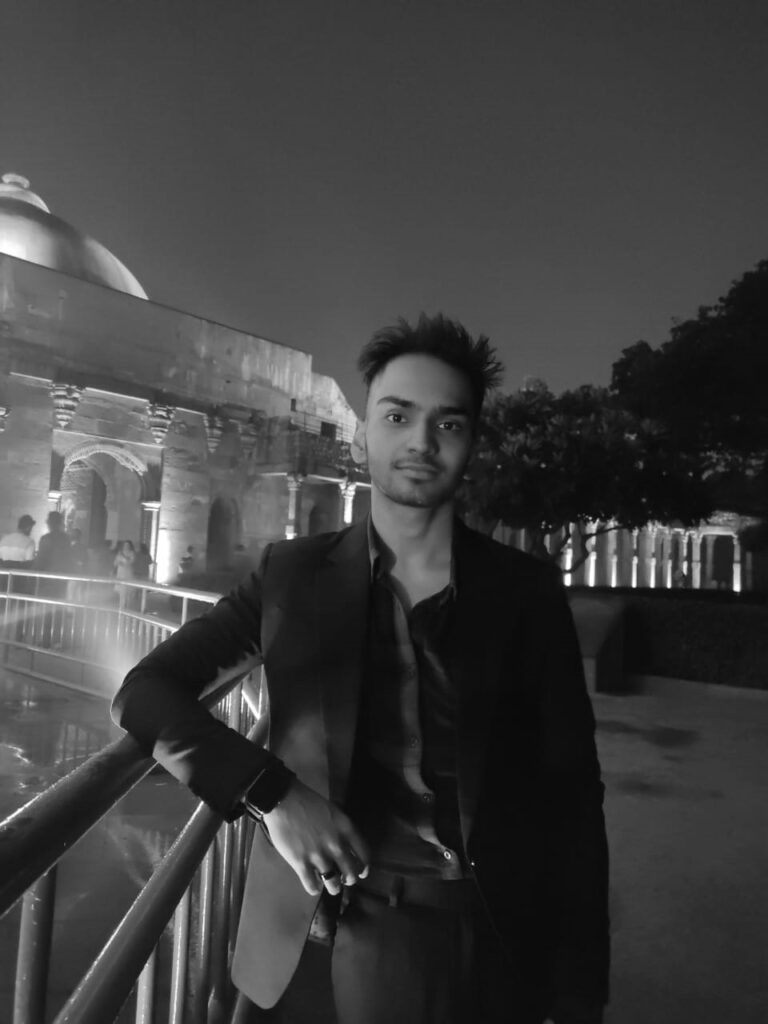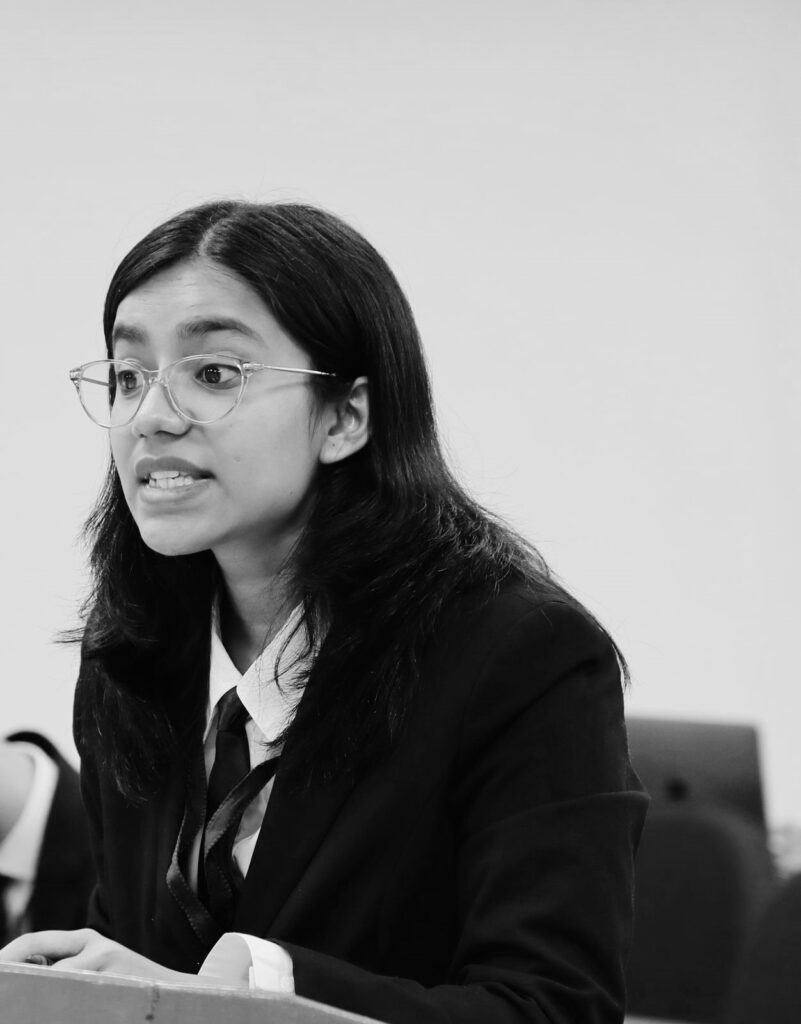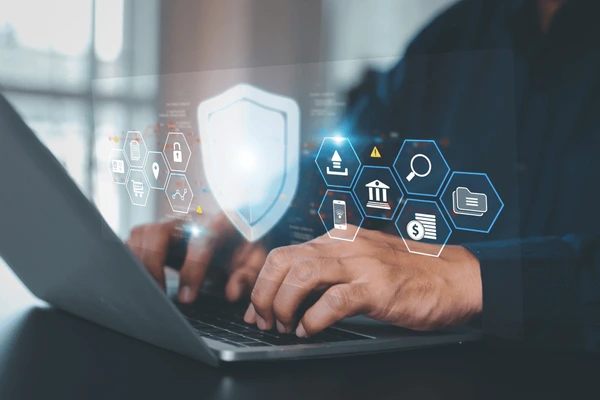
Divyanshu Kumar

Stuti Narayan
INTRODUCTION
The Supreme Court has recently reserved its judgement on a Madras High Court decision in S. Harish v. Inspector of Police quashing proceedings against a 28-year-old man accused of watching child pornography. The ruling in S. Harish has sparked debate over whether watching child pornography falls within the purview of the Protection of Children from Sexual Offences Act, 2012 (POCSO) and sets a harmful precedent as it concludes that watching and possessing child pornography is not illegal, thereby raising the potential increase in demand for such material and putting innocent children at risk of exploitation.
This issue has brought to light a notable disparity in the legal framework surrounding child pornography laws in India. While the browsing or seeking of material portraying the sexual exploitation of children has been rendered illegal under Section 67B of the Information Technology Act, 2000 (IT Act), there is a noticeable absence of explicit mention regarding the act of “watching” such material under POCSO, which criminalises various actions related to sexual exploitation of children. This omission is particularly noteworthy given the prevalence of online platforms where individuals can directly access child pornography, rendering traditional notions of possession obsolete in modern times. Furthermore, these legislations fail to adequately address virtual or simulated sexually exploitative material, leaving a significant gap that can be exploited.
This article seeks to address this specific gap in the law and offer a thorough definition of the criminal offence that effectively captures its nature and seriousness. In pursuit of this objective, it critiques the usage of terms like “child pornography” and “Child Sexual Abuse Material” (CSAM) within legal discourse and media, emphasising their limitations. Further, the article advocates for the adoption of the term “Child Sexual Exploitation Material” (CSEM) as a more fitting alternative.
“CSEM”: A BETTER ALTERNATIVE TO CHILD PORNOGRAPHY
Numerous nations globally, including Scotland and Northern Ireland, have acknowledged the insufficiency of the term “child pornography” and instead embraced alternative terminology such as CSAM. While this shift represents progress, it remains imperfect. Before presenting a new alternative, it is imperative to dissect these terms and recognise their inherent limitations.
Referring to child sexual exploitation material as “child pornography” diminishes the seriousness of the offense. Employing the term “pornography” may unintentionally normalize the content, implying a level of consent that is present in pornography which is a legitimised industry in various parts of the world. This misrepresentation can desensitise individuals to the exploitative nature of the material and hinder efforts to combat child exploitation. Further, labelling it as “child pornography” may indirectly place blame on the child victims, as the term “pornography” suggests voluntary involvement or consent.
Alternatively, the use of the term ‘Child Sexual Abuse Material’ serves as a reminder that the image serves as a permanent record of the abuse endured. It emphasizes that the subsequent distribution of such an image has the potential to re-victimise the child each time it is viewed for sexual gratification. Although the term CSAM includes depictions of rape, it falls short in encompassing images of children that may not explicitly depict sexually abusive acts but are still utilized for sexual gratification by online offenders.
Thus, this article proposes the usage of the term Child Sexual Exploitation Material (CSEM) as a more precise terminology since it encompasses and addresses all such sexually exploitative acts like morphing, non-explicit, and non-visual materials. This is further because CSEM accurately reflects any and every act committed with children’s bodies or their depiction, acknowledging that the children’s inability to give meaningful consent makes them more vulnerable to exploitation. Therefore, such acts or depictions need not go on to become abusive, and their commission must be deemed to be exploitative since it comes from a position of inability to consent and by adopting CSEM as an alternative terminology, the severity of the offence can be better conveyed and the urgency of combatting child exploitation in all its forms reinforced.
THE LACUNA IN THE INDIAN LEGAL SYSTEM
Although the POCSO and the IT Act both encompass a range of prohibited behaviours, including the publication, transmission, creation, or utilisation of children for pornographic purposes, the legal framework regarding the act of watching or downloading CSEM remains ambiguous. Section 15 of the POCSO solely penalizes the possession of CSEM if it is conducted with the intention of distribution or for commercial purposes, while private viewing or downloading of such material remains unpunished. Conversely, Section 67B(b) of the IT Act penalizes the seeking, browsing, and downloading of CSEM, effectively making watching such material even privately punishable.
Courts while dealing with the act of watching or downloading CSEM including real children have introduced artificial distinctions in interpreting the proviso, such as whether the CSEM was watched privately (Vipin Raju Petitioner v. State of Kerala) or by a one-time consumer (P.G. Sam Infant Jones v. State) where it was held not to be an offence or downloaded with the intent of transmission or engage in commercial activities in which cases the courts deem possession punishable. For instance, the Madras High Court, in S. Harish had focused on the fact that the accused merely downloaded and watched the CSEM in privacy. The single-judge bench went on to hold that the accused’s act of watching child pornography videos would not fall within the scope of Section 14(1) since he did not use a child for pornographic purposes. Further, the Court held that watching child pornography, per se, is not an offence under Section 67B of the IT Act, 2000, without engaging or expounding upon the explicit mention of ‘browsing’ child pornography under the said provision and in stark disregard of the same, the Court opined that merely downloading and watching child pornography just depicts a moral decay on the part of the accused, not attracting the IT Act. This lenient interpretation of penal provision overlooks the fact that penal provisions are supposed to be interpreted strictly solely based on the language of the statute without any assumptions or additions.
The courts seem to prefer the POCSO, a special law designed to protect children from sexual offenses even though it does not criminalize the watching and downloading of CSEM, over the IT Act, which does. Interestingly, in 2021, the Madras High Court in P.G. Sam Infant Jones v. State held watching child pornography an offence, strictly relying on Section 67-B of the IT Act, which, it noted, penalises every kind of act pertaining to child pornography. It distinguished viewing pornography from viewing child pornography and noted that in the latter case, even viewing would constitute an offence as it falls outside the scope of any right to free expression and privacy.
However, there is an urgent need for the courts to consider legislative intent and purpose in cases of conflict between two special acts. While the POCSO Act provides stricter punishments and procedural safeguards for child victims, the IT Act offers better safeguards in perils of the consumption of CSEM. Hence, it is imperative for the courts to harmoniously construct these provisions in a cohesive manner and enforce Section 67B of the IT Act with the same level of seriousness as the POCSO Act. Alternatively, the POCSO Act could be amended to incorporate a clause akin to that of Section 67B of the IT Act.
AMBIGUITIES IN THE DEFINITIONS
Section 2-(da) of the POCSO Act explicitly defines the term child pornography as:
“any visual depiction of sexually explicit conduct involving a child which include photograph, video, digital or computer-generated image indistinguishable from an actual child and image created, adapted, or modified, but appear to depict a child.”
Evidently, the scope of the POCSO Act extends to encompass computer-generated and modified images, thereby including instances of virtual or simulated pornography, as well as situations where a child’s image is superimposed onto an adult body which is akin to the definition provided in The Council of Europe Convention on the Protection of Children against Sexual Exploitation and Abuse (Lanzarote Convention). However, a significant issue arises concerning the absence of penalties solely for the act of watching or downloading CSEM under POCSO, unless conducted with the intention of transmission or for commercial purposes, which is done under the Section 67B of the IT act, which provides:
“(b) creates text or digital images, collects, seeks, browses, downloads, advertises, promotes, exchanges or distributes material in any electronic form depicting children in obscene or indecent or sexually explicit manner”.
Here, the act of watching or downloading CSEM, even privately, is criminalised, the definition of children given as an Explanation to Section 67B provides that children means a person who has not completed the age of 18 years. Thus, digital or computer-generated images indistinguishable from an actual child, and images created, adapted, or modified but appear to depict a child are not explicitly covered under this Act, and watching such pornography would remain legal. The effect of this inconsistency is that while creating, publishing, and transmitting CSEM, including real as well as virtual or simulated pornography, is punished, its consumption remains legalised.
There is thus an incumbent need to interpret the provisions under the POCSO Act and the IT Act in an all-inclusive and broad manner, i.e., to include virtual or simulated images of a child or a person who appears to be a child.
WHY MERE WATCHING CSEM MUST BE CRIMINALISED?
In examining the relationship between the consumption of CSEM and the commission of sex offenses, while definitive causality remains elusive across various studies, the Canadian Supreme Court in R v Butler has underscored a reasonable presumption of a causal link between the viewing of child pornography and shifts in attitudes and beliefs. Even absent direct causation, the possession and consumption of such material significantly bolster the demand for its production, thereby perpetuating a vicious cycle of exploitation and harm. Notably, research has also identified an elevated risk of child sexual abuse by individuals with prior convictions who engage in the consumption of CSEM, thereby posing a direct threat to the safety and well-being of children. Furthermore, non-regulation of watching CSEM can normalise exploitative actions, failing to acknowledge the psychological ramifications on children. Regulatory measures such as educational programs, an effective reporting system, stricter monitoring, and technological interventions to prevent access can complement the criminalisation of CSEM. However, given the gravity of the act and its repercussions, these measures alone are insufficient in the age of deep fakes. Criminalisation serves as a necessary deterrent.
Critics argue that criminalizing the viewing of simulated child pornography infringes on individual privacy and freedom of expression. Nonetheless, the rights of individuals cannot take precedence over the right of children to be protected from exploitation and abuse. Criminalising CSEM is also labelled to be based on the moral considerations of society; however, given the harmful effect it poses to children, moral conviction is not the sole basis of its criminalisation.
Further, the criminalisation should encompass virtual or simulated child pornography because while the child depicted in the virtual image may not suffer harm, actual children could feel the harmful effects of virtual or simulated child pornography as it could be used in the seduction of children. The US Supreme Court lends support to this proposition in Obsborne v. Ohio. Further, in addition to recognising the psychological and emotion well-being of children, regulating virtual or simulated child pornography would control the market creation, which legitimises the state interest in that regard, as the protection of virtual child pornography will flood the market with images depicting unidentifiable children engaged in sexually explicit conduct.
If virtual child pornography is not regulated, the demand for pornographic images depicting children will be easier to satisfy. While Section 2-(da) of the IT Act explicitly mentions ‘computer-generated image’ and image which ‘appear to depict a child’ under the ambit of child pornography, Section 67B of the Act needs to be interpreted to derive a similar meaning of ‘children’, i.e., it should include both real as well as virtual or simulated children or persons appearing to be children. Further, a cue could be taken from Alaska’s Criminal Law, which penalises access to any child exploitative material covering even non-visual material in its ambit. Moreover, the US Supreme Court held that child exploitation material might be regulated regardless of whether it would otherwise be ‘obscene’, thus indicating a path to control even non-explicit material. This broad interpretation is pertinent because an effective regulation must encompass all the factors and sources of the harm experienced by children when CSEM is used for its power of seduction and inflicting suffering on the children affected.
RECOMMENDATIONS
To combat the multi-faceted challenges posed by CSEM in the modern world dominated by technology and innovation even in the realm of crime, first and foremost, the term “child pornography” should be substituted with “CSEM” to more accurately reflect the complexities involved in addressing child exploitation content. This terminological shift would prompt legislative bodies to broaden their scope to include both virtual forms and materials that are not visually explicit, thereby enhancing the legal framework’s effectiveness in criminalising various manifestations of child exploitation. Resultantly, the definition clause under Section 2 of POCSO shall read:
2-(da) “child sexual exploitation material” means any visual depiction of sexually explicit conduct involving a child which include photograph, video, digital or computer-generated image indistinguishable from an actual child, and image created, adapted, or modified, but appear to depict a child.”
Secondly, a harmonious interpretation of POCSO and Section 67B of the IT Act is the need of the hour to regulate CSEM. The Court must interpret Section 67B of the IT Act purposively keeping in mind the original intention with which POCSO was enacted, i.e., effectively addressing sexual exploitation and sexual abuse of children.
Alternatively, at the legislature level, POCSO shall be amended to include ‘watching’ or browsing child pornography under the ambit of criminalised conduct, and to this effect, an additional Section, 15A, could be added to Chapter III which deals with the usage of children for pornographic purposes and punishment thereof. The clause shall read:
“15A. Any person, who creates text or digital images, collects, seeks, watches, browses, downloads, advertises, promotes, exchanges or distributes material in any electronic form depicting children in obscene or indecent or sexually explicit manner shall be punished with imprisonment of either description which may extend to three years or with fine or with both.
Explanation- For the purpose of this section, ‘child pornography’ shall be construed as per Section 2-(da).”
This addition to POCSO would criminalise exploitation of children in all its forms, including through materials which are non-visual, non-explicit or involve digital or computer-generated image indistinguishable from an actual child or morphed images which appear to depict a child, thereby effectively serving the purpose of POCSO.
Therefore, the Supreme Court, while ruling on the present matter, must interpret the statutes harmoniously, criminalising the mere watching of CSEM as it ‘uses’ a child, or alternatively, suggest the legislative amendments as recommended above.
Divyanshu Kumar and Stuti Narayan are both III-Year students at NALSAR University of Law, Hyderabad.
The opinions expressed in the Blog are personal to the authors. The University does not subscribe to the views expressed in the article/blog and does not take any responsibility for the same.





